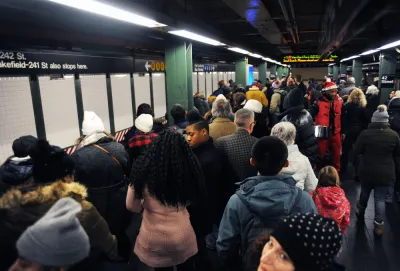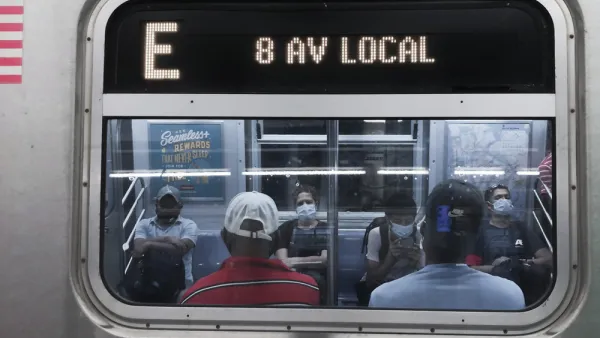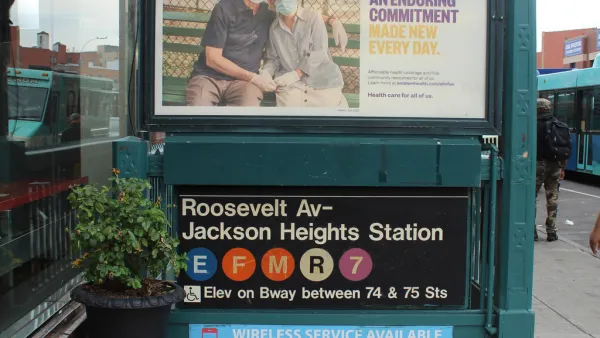As subway riders return in fits and starts, some stations are experiencing a much faster recovery than others.

New York City's subway riders are coming back, but the return has been uneven across the city's boroughs. Michael Gold, Ana Ley and James Thomas explore the differences in ridership patterns in Manhattan, Brooklyn, and Queens.
Stations in lower-income areas in Brooklyn, Queens and Upper Manhattan, where residents are less likely to be able to work from home and typically depend more on public transit, have rebounded far faster than stations in office-heavy sections of Manhattan, including some that were once the busiest in the system, where many workers are still able to work remotely.
The system's low ridership numbers put it in the same difficult position as transit agencies around the country that are struggling to continue serving transit-dependent riders while dealing with labor shortages and slashed revenues.
The article details the experiences of riders at three different stations. The daily commute never stopped for many essential workers at the Junction Boulevard station in Queens, where ridership was back to 74.2 percent of pre-pandemic levels by November 2021. Meanwhile, ridership at Manhattan's Wall Street station, one of the system's lowest, remains at a dismal 37.5 percent of 2019 levels. The article notes that the drop in commuters has deeply affected the small businesses that depended on white-collar workers, while some riders avoid the eerily empty subway because of safety concerns, an issue the city is trying to mitigate with more visible patrols and PR campaigns.
FULL STORY: Here’s Where Subway Riders Have Returned. And Where They Haven’t.

National Parks Layoffs Will Cause Communities to Lose Billions
Thousands of essential park workers were laid off this week, just before the busy spring break season.

Retro-silient?: America’s First “Eco-burb,” The Woodlands Turns 50
A master-planned community north of Houston offers lessons on green infrastructure and resilient design, but falls short of its founder’s lofty affordability and walkability goals.

Delivering for America Plan Will Downgrade Mail Service in at Least 49.5 Percent of Zip Codes
Republican and Democrat lawmakers criticize the plan for its disproportionate negative impact on rural communities.

Test News Post 1
This is a summary

Test News Headline 46
Test for the image on the front page.

Balancing Bombs and Butterflies: How the National Guard Protects a Rare Species
The National Guard at Fort Indiantown Gap uses GIS technology and land management strategies to balance military training with conservation efforts, ensuring the survival of the rare eastern regal fritillary butterfly.
Urban Design for Planners 1: Software Tools
This six-course series explores essential urban design concepts using open source software and equips planners with the tools they need to participate fully in the urban design process.
Planning for Universal Design
Learn the tools for implementing Universal Design in planning regulations.
EMC Planning Group, Inc.
Planetizen
Planetizen
Mpact (formerly Rail~Volution)
Great Falls Development Authority, Inc.
HUDs Office of Policy Development and Research
NYU Wagner Graduate School of Public Service




























